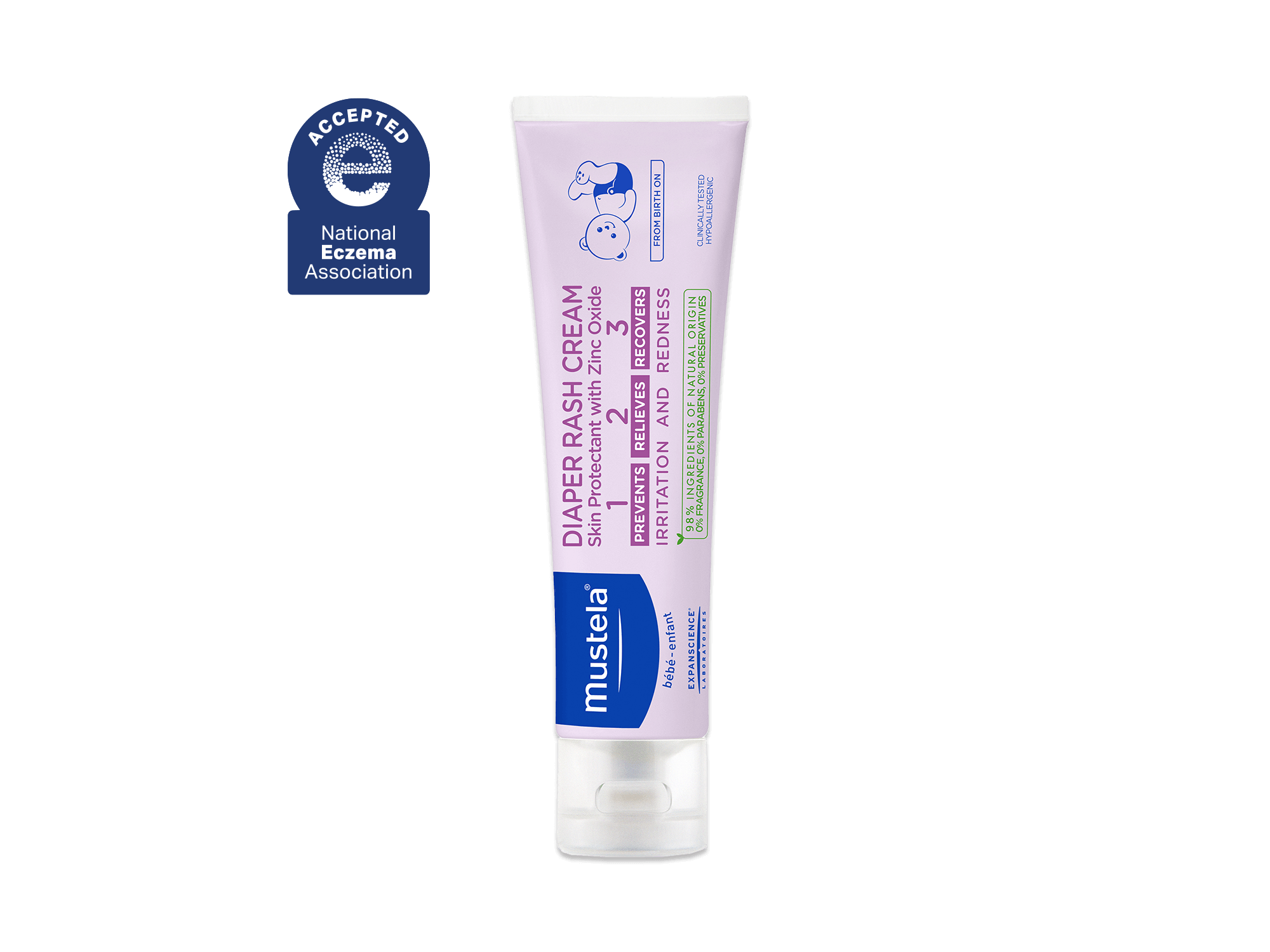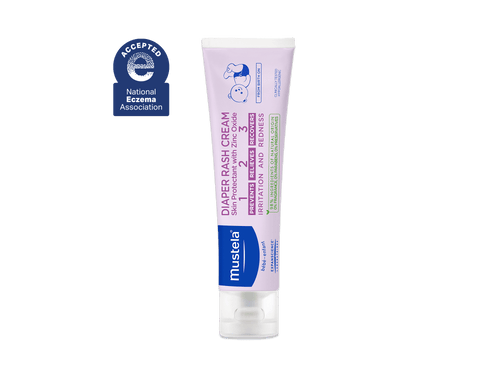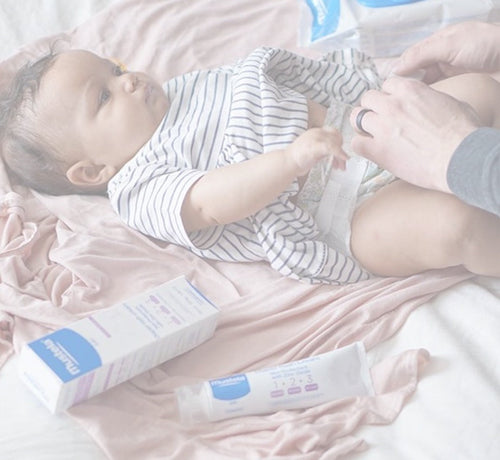When you’re a first-time parent, there’s a whole new world to discover, especially when it comes to baby poop, diaper rash, choosing diapers, and the like. If you’ve been scratching your head wondering, “How should a diaper fit?”, you’re in the right place.
In this article, you’ll read about how to know your baby’s diaper fits just right — how tight it should be, where it should sit, and the rest. We’ll also offer a few tips for taking care of your baby’s diaper area at every diaper change.
But before we get to how a diaper should fit, let’s briefly discuss how to choose the correct diaper size.
Table Of Contents
How To Choose The Correct Diaper Size

Look At The Weight Suggestion
When you’re checking out the diaper selection online or in the store, look at the weight suggestion listed on the diaper box. This will give you an idea of which size to choose.
Just keep in mind that babies can weigh the same but have very different body types or shapes, meaning they might wear different diaper sizes. But, for your first diaper purchase, referring to the weight recommendations is a great place to start.
Consider Blowouts
Once you’ve been diapering your baby for a while, taking blowouts into consideration can help you decide if you need to size up or down. All babies will have the occasional blowout (there’s no way around it!), but frequent blowouts could mean the diaper is too big or too small.
How so? A diaper that’s too small doesn’t offer enough room for the poop, and a diaper that’s too big may leave gaps.
Check For Red Marks
If you find red marks in the diaper area near your baby’s belly, legs, or back, it’s probably time to put your growing little one in a bigger diaper.
First, try loosening the diaper tabs. But if the red marks persist, size up.
How Should A Diaper Fit?
You’ll diaper your baby thousands of times in their early years and become quite the expert. But since diapering a little one wasn’t a daily activity before parenthood, you might not know how tight a diaper should fit, where it should sit on your baby’s body, and the like.
So, how should a diaper fit? Let’s take a look.

With Tabs Fastened Easily
First of all, the diaper tabs go in the front, near your baby’s tummy. They should fasten easily without having to tug them too much.
If the tabs meet or overlap in the middle with no problem, the diaper might be too big. On the other hand, if you have to pull to fasten them and they’re tight, the diaper is probably too small.
Just Below The Belly Button
Speaking of the fit of the front of the diaper, the top should sit just underneath your baby’s belly button (or umbilical stump) without covering it. And the diaper shouldn’t be too far below their belly button.
Without A Muffin Top
When you’ve fastened the tabs, check that the diaper fits snugly without creating a muffin top. If your baby’s belly spills out on top, loosen the diaper tabs or opt for a bigger size.
With Leg Ruffles Out
As for the leg holes, be sure that the ruffles are out, not tucked under. And remember that if your baby ends up with red marks on their legs, the diaper is too tight or too small.
With Room At Their Bottom
As for the back of your baby’s diaper, it should cover their bottom — no baby butts hanging out. In fact, it should hang down from their bottom instead of fitting snugly.
That extra space in the bottom of a baby’s diaper is there for a reason!
With Freedom To Move
Lastly, a baby’s diaper should fit with room to groove. Your baby should have freedom of movement with a diaper on. If it seems to bother them or restrict activities, that’s a sign that they need a bigger size.
Tend To Your Baby’s Diaper Area
Ensuring a good fit is part of caring for your baby’s diaper area and keeping their skin as healthy as possible, but there’s more to it. Even the best-fitting diaper doesn’t make up for less-than-ideal diaper-changing habits.
At every change, tend to their skin by wiping it clean and applying diaper cream.
Wipe Their Bottom

First and foremost, clean your baby’s bottom. The good news is that you have several options that make it easy to get a squeaky-clean baby whether you’re at home or on the go. Whip out pre-packaged wipes, make your own homemade diaper wipes, or apply micellar water.
For an organic option, choose our Certified Organic Water Wipes with Cotton and Aloe to leave your baby’s skin soothed, soft, fresh, and moisturized.
These fragrance-free and ultra-soft wipes are made with organic cotton, organic aloe vera, and filtered, purified, and softened water. No questionable ingredients (such as parabens, phthalates, and phenoxyethanol) included!
If you’re not familiar with using micellar water to clean your baby’s skin, here’s the low-down. All you need is micellar water, like our No Rinse Cleansing Water, and a cotton ball or soft cloth.
Wet the cotton ball with micellar water and gently wipe your little one’s skin. That’s it. There’s no need to rinse. Micellar water dissolves dirt and impurities to cleanse skin without stripping it of its natural oils. It’s ideal for between baths and when you’re out and about.
Our No Rinse Cleansing Water is composed of 98% ingredients of natural origin per ISO 16128 standard including avocado perseose, a patented natural ingredient specifically designed to help protect your baby's delicate skin.
If you prefer an organic micellar water option, look no further than Certified Organic Micellar Water with Olive Oil and Aloe.
Apply Diaper Cream

Once your baby’s diaper area is clean and dry, it’s time for diaper cream. But diaper cream is another baby world that might be entirely new to you! Not all diaper creams are created equal. They vary in ingredients and how they are applied.
Here are three options so you can choose the one that works best for you.
Sprayable Diaper Cream
When your baby’s skin is irritated and sensitive, a sprayable diaper rash cream allows you to care for their skin without touching it, rubbing it, or irritating it even more.
Our fragrance-free Diaper Rash Sprayable Cream is made with 99% ingredients of natural origin per ISO 16128 standard. With these gentle ingredients, this cream is a natural alternative to steroid options and keeps your baby’s skin dry, soft, and comfortable to prevent and treat diaper rash.
To apply it, simply shake the bottle well and spray the cream onto your baby’s clean, dry skin. There’s no need to rub it in!
EWG Verified Diaper Cream
For an EWG Verified diaper cream made with organic ingredients, choose Diaper Cream with Olive Oil and Aloe. This is a dye-free formula made with natural ingredients, such as aloe vera, sunflower oil, and olive oil that is sourced from family-owned groves in the South of France.
Safe for even the most sensitive of baby skin, this diaper cream meets EWG Verified™ criteria, which means that it avoids EWG's ingredients of concern and is committed to full transparency.
And, with packaging made from sustainably sourced sugar cane and no secondary cartons, this product is designed to be environmentally conscious inside and out.
Diaper Cream For Eczema-Prone Skin
If your baby has eczema-prone skin, choose a cream that’s accepted by the National Eczema Association, such as Diaper Rash Cream 1 2 3.
Clinically proven to soothe the diaper area and relieve irritation and redness from the very first use, this diaper cream continues to work in-between diaper changes to prevent future rash recurrences.
Every time you apply this diaper cream, you’ll provide your baby’s skin with soothing, natural ingredients, like sunflower oil distillate, beeswax, avocado oil, oxeoline of alcacea, and non-nano zinc oxide.
How Should A Diaper Fit? Just Right!

How should a diaper fit? Not too big and not too small, but just right.
Now that you’ve read this article, you know what to look for in a good fit: tabs that fasten easily below the belly button, no muffin top, room in the bottom, and freedom to move.
Care for your baby’s diaper area by providing them with perfectly-sized diapers and tending to their skin. Keep it clean with Certified Organic Water Wipes with Cotton and Aloe and protect delicate skin by applying Diaper Rash Sprayable Cream or Diaper Rash Cream 1 2 3.
With a fresh, free bottom, your baby will be moving and grooving every day!

















